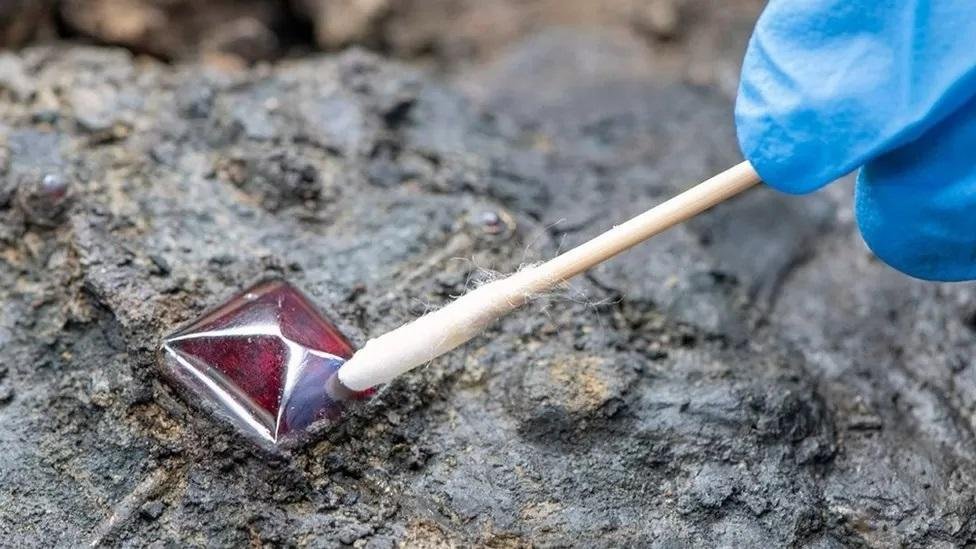A large garnet was discovered in the center of a “unique” silver cross unearthed by archaeologists at an ancient burial site, BBC News reported.
 Credit: MOLA
Credit: MOLA
It’s the latest discovery at Harpole, near Northampton, where a 1,300-year-old grave, believed to be of a high-status woman, was uncovered.
The cross has been found, but it is still encased under soil.
Last month, archaeologists revealed they had unearthed a Medieval gold necklace dated from 630-670 AD, the Anglo-Saxon period. Experts say the exceptional necklace is the “richest of its type ever discovered in Britain.”
 Credit: MOLA
Credit: MOLA
It consisted of at least 30 pendants and beads made of Roman coins, gold, garnets, glᴀss and semi-precious stones.
MOLA, the Museum of London Archaeology, named the findings the “Harpole Treasure.”
Two decorated pots and a small copper dish were also included in the burial.
However, x-rays taken on soil blocks lifted from the grave revealed a further find – a beautiful and elaborately decorated cross with unusual depictions of human faces cast in silver.
Mola conservators believe the woman was an early Christian leader because of the large and ornate piece.
Paul Thompson, Mola project manager, said: “Suddenly we had a rubbish pit that turned into a burial beyond burials.
“It’s a once in a lifetime experience to be working on something like this.”
 Credit: MOLA
Credit: MOLA
While X-rays showed the shape of a cross, it could be some time before the entire item is seen due to the slow and delicate process of removing all of the earth from it.
A Mola spokeswoman said: “We haven’t excavated it from its block yet, so there are lots of questions we can’t answer. All we really know is the shape and that it is big and contains silver.”
 Credit: MOLA
Credit: MOLA
Based on the X-rays taken several months ago, archaeologists knew it had a garnet at its center.
“The central garnet is the first part of the cross we’ve reached,” she said.
A skeleton unearthed within the burial had decomposed entirely, leaving only tiny fragments of tooth enamel.
 An artist’s impression shows what the grave of the high-status woman may have looked like. Credit: MOLA
An artist’s impression shows what the grave of the high-status woman may have looked like. Credit: MOLA
Archaeologists believe the grave finds suggested it was of a very devout high-status woman such as an abbess, royalty, or perhaps both,
They added: “The combination of the incredible necklace and other grave goods means this is one of the most spectacular female early medieval burials ever discovered in the UK,” they added.





